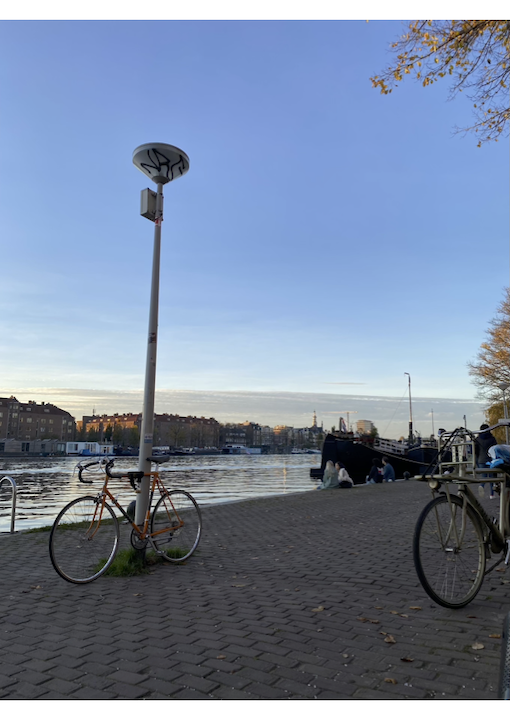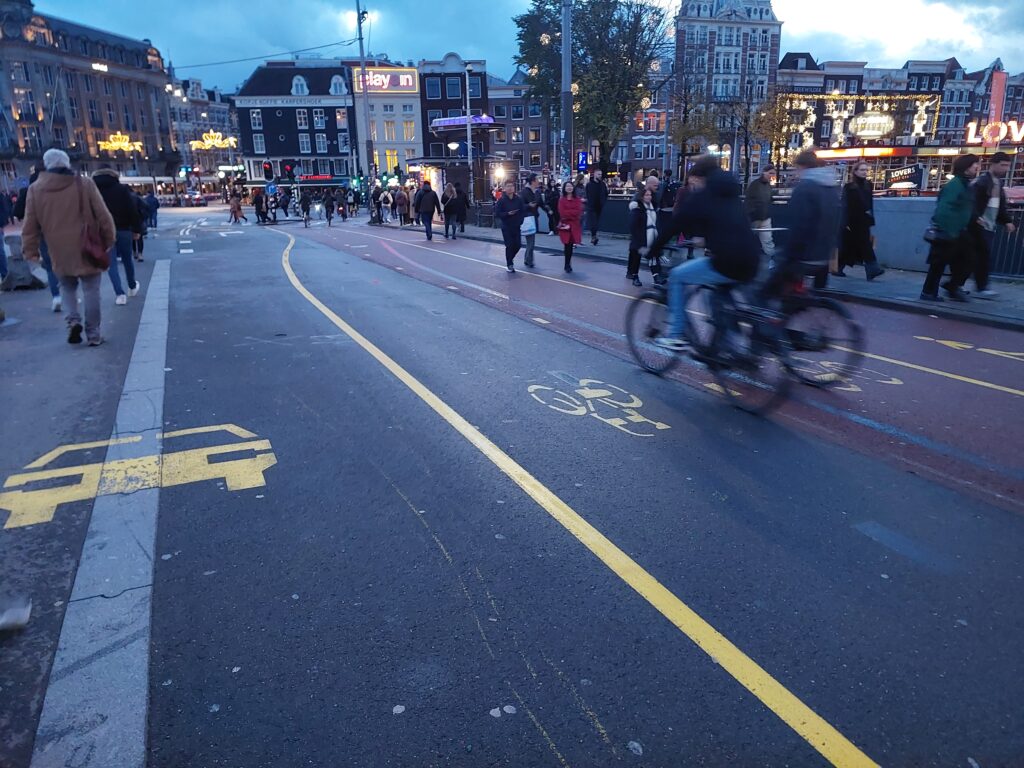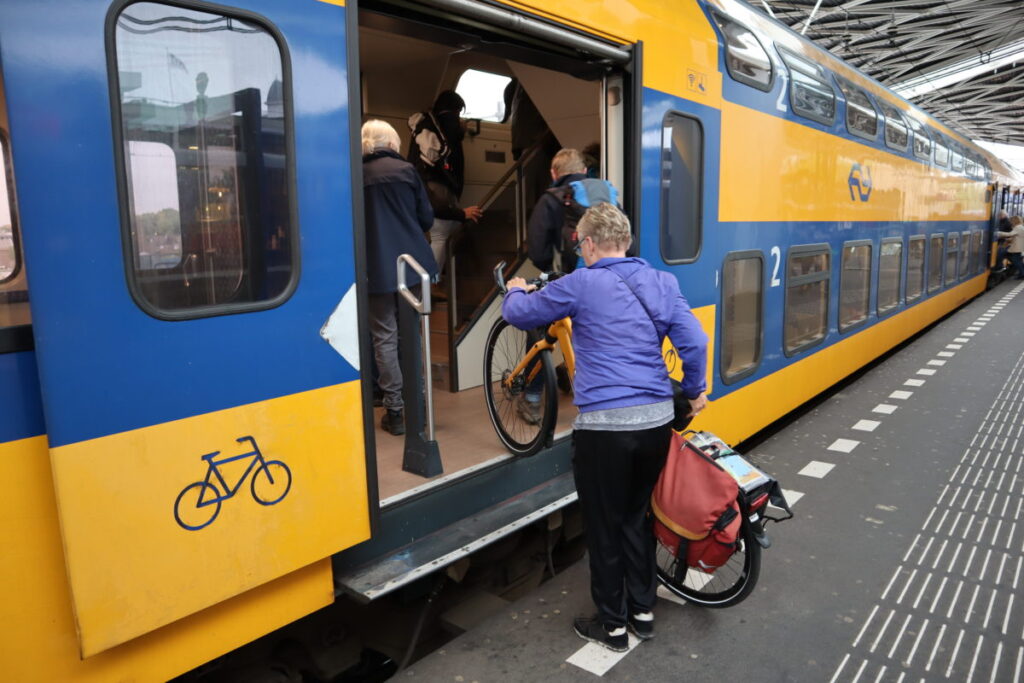Chen Munn THAM | LinkedIn
Selected final essay, published 11 July 2020
Chen Munn has 20 years of experience in the transport industry, including being involved in shaping cycling towns in Singapore. While he used to cycle more seriously ‘back in the day’, he’s now mellowed to cycling on his foldie with his son along designated trails. Chen Munn is also a bicycle advocate, contributing to public education on safe cycling practices.
Unraveling the Cycling City MOOC on Coursera
Putting bicycles and ‘cycling’ as a formal mode of transport into Singapore’s overall transportation equation only happened as recent as 2010. Before that, cycling was seen (in fact, in many cases, it is still seen) as an irritation, both from the pedestrian and car driver points of views. Cycling was the proverbial unwanted child. With increasing GDP came higher spending power, which led to population growth and vehicular growth. Cycling was limited to two main types: recreational and utility. The former was done in parks and along Park Connector Networks (PCN), which were essentially shared paths for cyclists, walkers and joggers. The latter was usually done on-street by the elderly within residential estates because cycling on footpaths were illegal, although there were a considerable number of cyclists who cycled on footpaths as they felt it was safer than cycling on roads. Enforcement was limited to strict warnings at most, as long as conflicts did not result in severe injury or fatalities.
The turn of the tide came in 2005 when a Member of Parliament, herself a cycling enthusiast, initiated a cycling feasibility study of her town. I would later become involved in this study.
She observed there were many utility cyclists in her town who were making short but necessary daily trips to amenities. Was there enough space for bicycle paths to serve her residents? Would her idea of bicycle paths sit well with the planning agencies and more importantly, would such infrastructure be accepted by her residents? Designs were made for ‘Version One’ of cycling infrastructure in a Singapore matured town. This not only included paths, but also shelters, some landscaping, and bicycle parking. Fast forward to 2010 and after many rounds of intense debates, Tampines Town became Singapore’s first Cycling Town. Together with intra-town facilities, cycling was made permissible on footpaths so that cycling could be connected and seamless.

By virtue of general acceptance and observable increase in usage, the pilot in Tampines was deemed successful with several lessons learned. The next few years saw more towns following suit. In fact, a National Cycling Plan was mooted in 2013 for government agencies to look at how cycling could be formally introduced as a mode of transport especially for first mile-last mile trips. Foldable bicycles and fixies became more common. Preliminary design guidelines were drawn up based on global best practices and were used in furthering design implementations in other towns. Meanwhile dock-less bicycle sharing systems arrived, along with a proliferation of e-scooters.
However, policymakers and urban planners were not fast enough to react. Everyone was suddenly clamoring for limited space on off-street paths. An Active Mobility Unit was set up to oversee policy and planning for such active mobility modes. Very soon, more towns were retrofitted with newer versions of bicycle paths, which were distinguished from footpaths by their red pavements. Policies were designed to ensure safety and responsible use of the paths.

Today, there is a network of 440km of cycling paths, the dock-less bicycle sharing programs have been reduced to a manageable level. Soon, the government plans to have 750km of paths by 2025 and tripling it by 2030. Despite the provision of a ‘comprehensive’ bicycle network in the coming years, will Singapore ever imbue a culture of cycling at a level similar to some Dutch cities? In fact, will this encourage more to use the bicycle as a mode of transport? Will we see a higher modal share of bicycle users?
The key takeaway that is most relevant to the Singapore context is this:
Much of the learning takes place biking around, understanding cycling as a lived experience. Many of the environmental variables, in other words, seem ‘necessary, but not sufficient conditions’ for cycling environments
te Brömmelstroet, et al, 2018
Indeed, to inculcate a culture of cycling, it is the collective effort – and the willingness – on everybody’s part to contribute to do what is necessary to make a place a successful cycling city.
In my view, the pre-requisite for advocates, cycling enthusiasts, policymakers and planners is to ride frequently, and they all have to come together to make things work. It is pointless to have a comprehensive bicycle network which is a white elephant and hardly anyone uses it. Schools (and parents) need to allow children to cycle to school. Traffic junctions have to be holistically studied and designed to accommodate cyclists rather than pedestrians alone. Shopfronts need to allow the temporary parking of bicycles. Appropriately safe infrastructure needs to be implemented at spot locations such as bus stops and park entrances. Perhaps we need to introduce the upright Dutch bicycle here! Overall, everyone needs to experience the joys (and woes) of cycling to support the built-environment of bicycle paths and related facilities. When there is critical mass, more can be done to refine policies, infrastructure and education.
Just like it’s happening in the Netherlands, the process is still on-going. Discussions to improve the cycling city is never-ending. Singapore, and many other cities – need to come to this state of continuous engagement within and beyond the realm of ordinary transport, where the vast majority of the population will see cycling as everyday as walking.
Sources:
- Te Brömmelstroet, M., Nello-Deakin, S., Quillien, Jenny, Bhattacharya, I., Towards a pattern language for cycling environments: merging variables and narratives (Urban Cycling Institute, 2018).
Photos in this essay by Chen Munn THAM



